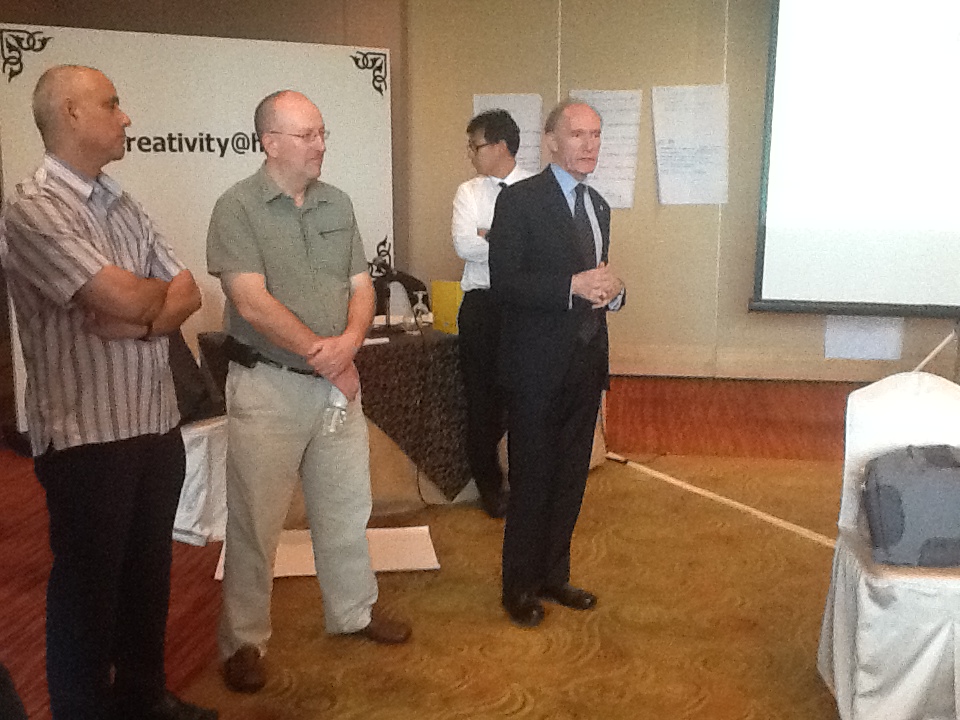
February 22, 2013, by Graham Kendall
Horizon Digital Nutrition Workshop
On the 21-22 Feb 2013, we hosted a Horizon Digital Nutrition Sandpit, held in collaboration with UNMC and CFFRC.
The aim of the sandpit (which was run similar to a UK EPSRC (Engineering and Physical Sciences Research Council) Sandpit) is to generate ideas from all the participants, which the aim of arriving at a project (sometimes projects) that receives funding to undertake the proposed research.
The research funds that were available was £20,000 (~ RM 94,000). £10,000 was contributed by Horizon, £5,000 by CFFRC and £5,000 by the Faculty of Science at UNMC. We are, obviously grateful for these contributions.
The Sandpit was aimed specifically at Digital Nutrition. This is defined as (taken from Horizon’s web site):
“Hundreds of millions of people are suffering from deficiencies in essential nutrients because they have limited access to adequately nutritious food. Nutrient malnutrition is sometimes caused by a lack of food, but it is also sometimes caused by food oversupply and unhealthy lifestyles. Non-communicable lifestyle related diseases, like diabetes and cardio-vascular diseases, are now the world’s most significant cause of mortality. The issue is not merely providing enough food to feed the world’s population, but it is also providing food of high enough nutritional quality to keep them healthy, and making such food sufficiently acceptable. Digital nutrition is the application of new information technologies, particularly ubiquitous computing and digital infrastructure, to this problem. How can these technologies add value across the value chain – from food producers to marketers and consumers? Can these technologies help to change the way that people eat and perceive food? How can these technologies help to overcome nutrient malnutrition that is caused by such factors as food scarcity, behaviour, cultural and economic disadvantages or inadequate knowledge? How may digital nutrition benefit both developed and developing societies?”
A core component of any projects that were proposed was that they had to include people from the UK and Malaysia and that there would be an expectation of visits between the two campuses. There is also the expectation that the funds would be used to pump prime/leverage other funds.
The sandpit lasted an intensive two days, with a structured program of activities (and we have to thank Sophie Dale-Black for leading the activities and keeping everybody organised, which was not always easy :-)), leading to a Dragon’s Den style pitch at the end of the second day. To add even more pressure, the Vice-Chancellor was able to attend for a short time and offer a few words of encouragement.
We would like to thank all the sandpit sponsors, for contributing the funds for this event, as well as all the people that participated. Particular thanks should go to Horizon who sent about 15 people over from the UK. We would also like to thank colleagues from the University of Reading and CFFRC who were also able to attend and contribute to the sandpit.
We have assembled a few pictures from the event. If you have any more (and are willing to share them), please send them to me (Graham Kendall) and I will add them to the gallery.
The big question. Which team were successful in securing the funds? We’ll let you know in another post.
No comments yet, fill out a comment to be the first

Leave a Reply